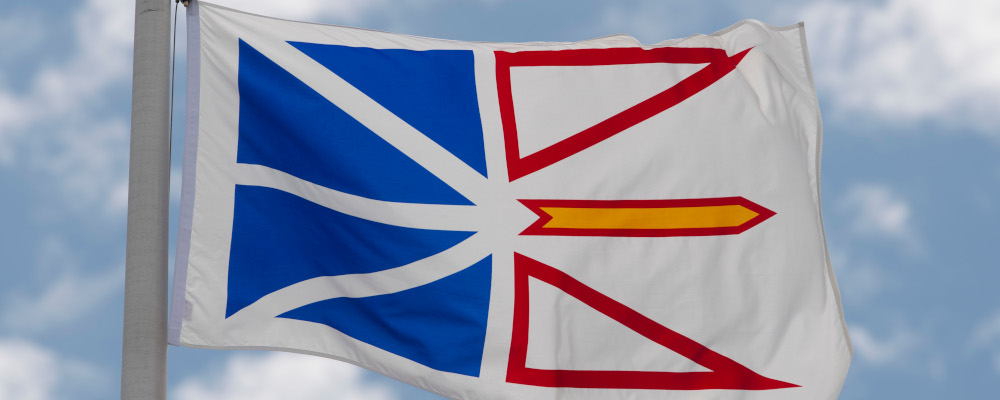The Hub is pleased to present a weekly column from author and historian Antony Anderson on the week that was in Canadian history.
March 31, 1949: Newfoundland joins Confederation
They had come from away, from a foreign country off the coast of eastern Canada with its own stamps, currency, and national anthem. They had gathered in Ottawa so they and their people could become Canadians (a supple state of mind and being that defies rigid definitions). The intricate legislation and devilish details had been sorted out. Now all these foreigners had to do was sign the terms of admission to join the work-in-progress called Confederation, in effect, to seal the deal on the largest single-day mass immigration in Canada’s history.
The year before, the Dominion of Newfoundland, (population nearing 360,000) had voted—by a razor-thin majority—to join the Dominion of Canada (population 13.5 million). At the signing ceremony in the Senate Chamber in Ottawa, one of the Newfoundlanders “was wracked with emotion,” tears in his eyes at what he and his fellow delegates had achieved, which he knew was something close to a political miracle, and which would never have happened without him. One-time union organizer, thwarted poultry farmer, former raiser of hogs and purveyor of quality pork sausages, riveting radio broadcaster, reporter, and above all, force of nature—Joey Smallwood had been the relentless dreamer and tactical organizer behind the whole project to take a chance on Canada and at the same time, return to representative government.
Newfoundlanders had been suspended in a kind of political limbo since 1934 when the bankrupt island nation, overwhelmed by the Great Depression, dissolved its House of Assembly and handed power over to Great Britain which established a Commission of Government comprised of three members appointed from the neighbourhood and three appointed from the Mother Country, presided over by a British governor. Despite the lack of accountability, democratic representation, elections, and such like, Smallwood, wrote many, felt “considerable respect for the integrity, efficiency and goodwill of the Commission of Government. Most people thought it was the best government we had ever had.” But this arrangement, however benign, could not go on forever.

In December 1945, Great Britain announced it was time to cut the umbilical cord, if that’s what people wanted. Newfoundlanders were invited to elect delegates to a national convention that would recommend potential political options, which would be ratified in a referendum. Sitting down to a solitary breakfast during a business trip in Montreal, Smallwood read the announcement in a morning newspaper. Some kind of lightning struck. He decided that day he was going to campaign for union with Canada. In his memoirs, he acknowledged he knew nothing of Canada’s history, had never traveled west of Ontario, and couldn’t even name all the nine provincial capitals. He was keenly aware that his own “people had no notion at all of what Confederation was or what it meant.”
Just as daunting, he had no idea how the government of Canada felt about the whole thing. Facing a long shot, he prepared in detail. He learned everything he could about the foreign country next door in order to sustain the persuasive power of his spoken and written words. He organized teams of true believers. His message control was ruthless. It had to be. This wasn’t just a job. It was a crusade for a better life for his island world.
In 1946, he ran in the constituency of Bonavista Centre, which contained his birthplace, Gambo, and got elected as one of the 45 members of the National Convention. The intense family argument between loyal Newfoundlanders was broadcast every night over the island’s radio network. From St. John’s to villages to hamlets to remote outports, the whole country heard Smallwood’s speeches, some four hours long, glowing with deep feeling for his birthplace: “We all love this land. It has a charm that warms our hearts, go where we will; a charm, a magic, a mystical tug on our emotion that never dies.”
But his appeal, so dense with hard facts, pointed to one solution: union with the rich neighbour that would lift the country out of its poverty. He was accused of high treason and other sins. Sometimes he traveled with a band of amateur bodyguards. One night at the convention, an anti-confederate (as they were called then) lunged at Smallwood and they both fell to the floor, in a messy scramble until other delegates pulled them apart. On another occasion, someone walked into his campaign office (when he wasn’t there) and insisted he visit a distant village. His aides kept asking why. The man kept dodging the answer until he finally blurted out the villagers wanted Smallwood to come so they “could drown the bastard.”
Smallwood knew he was fighting against history, against a deep trench of mistrust that went back into the previous century. A majority of Newfoundlanders had rejected the original Confederation in the 1860s and then again in the 1890s—the benefits had seemed intangible while the costs were easily grasped: potential new taxes and tariffs, conscription to Canadian wars, consorting with foreigners! In the 1940s, Confederation was opposed by the businessmen and merchants of St. John’s, old names, powerful families, and almost all the newspapers which, not unreasonably, just wanted a return to responsible government without any Canadian strings attached.
No surprise then that a majority of delegates at the National Convention defeated Smallwood’s resolution to place the Confederation question on the looming referendum ballot. He simply went over their heads and engineered a radio appeal and door-to-door petition and secured some 60,000 names demanding that Confederation be an option. When presented with the roll call, London, still the deciding power, agreed. If Smallwood had failed at this point, the whole game would have been lost.
The first vote
The first referendum was set for June 3, 1948, and offered three futures: keeping the Commission of Government, return to responsible government, and Confederation. Smallwood hit the road and rails and even flew in a dubious single-engine seaplane to reach the farthest flung outports. He would land on a small bay, rig a loudspeaker to one of the wings, and then stand on one of the pontoons, spreading his gospel of prosperity in places where infant and maternal mortality was shockingly high. His logic was impeccable: “Commission of Government means security, but no democracy; responsible government means democracy, but no security; Confederation means democracy and security, both.”
The anti-confederates, less disciplined, tried to scare voters with the threat of Canadian taxes that would ruin them and pushed a vague economic union with the United States. Smallwood countered with a very powerful argument. Joining Canada would allow Newfoundlanders to remain British subjects, to continue flying the Union Jack, and to remain loyal to the Crown. Joining the United States in an economic union, he argued, threatened this glorious inheritance. Those were not meaningless words. Smallwood’s superhuman efforts had kept the improbable venture alive, though the referendum results were muddy:
Responsible government: 69,400
Union with Canada: 64,066
Commission of Government: 23,311
Clearly, Newfoundlanders wanted their democracy back but they were evenly divided about whether their future included Canada. Neither of the leading propositions had broken the 50 percent mark so a second referendum was called for July 22, now a simple showdown between the confederates and the anti’s. Smallwood felt this next round was nastier, still pitting city versus the outports, but the replay ramped up an old sectarian divide. “In the main, Catholic church leaders strongly opposed Confederation,” writes historian Ray Argyle, convinced “that a ‘simple God-fearing way of life’ would be contaminated by the Protestant morality of modern Canada, leading to divorce and mixed marriages.” The Church was also determined to protect state funding for its separate schools.
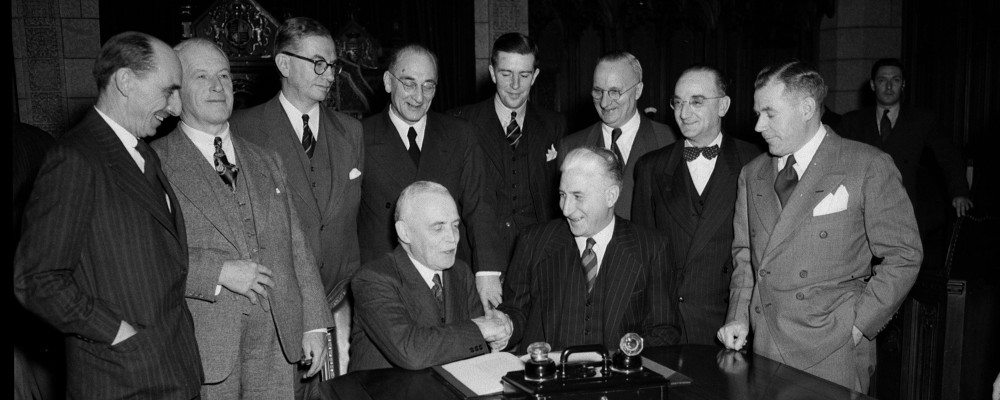
The second vote
Smallwood remounted the ramparts to lead the Confederation charge, armed with facts and hope, backed by his disciplined team and his seemingly infinite passion.
On the night of July 22, the people of Newfoundland cast a fractured choice about their future:
Union with Canada: 78,323 (52.34 percent)
Responsible government: 71,334 (47.66 percent)
It had come very close to being a stand-off but the confederates—joined by some 14,000 new allies—had edged over the 50 percent threshold. The anti-confederate count remained essentially static. Smallwood was exultant.
Far away in Ottawa, the soon-to-be new national capital for Newfoundlanders, Prime Minister William Lyon Mackenzie King was fretting about the results. He had stated in Parliament that should the good British subjects in Newfoundland “express clearly their will” in favour of union then “the people of Canada will welcome them as partners in a larger Canada.” King felt the referendum’s translucent majority did not reflect a clear expression of will.
Fortunately, one of his closest and shrewdest advisors, Jack Pickersgill, had foreseen his master’s anxieties and was ready for their morning phone call. When King asked Pickersgill what he thought of the results, Pickersgill exclaimed they were wonderful and pointed out that, with one exception, the pro-union’s 52 percent of the vote was in fact higher than any national result ever secured in a federal election by the Liberal Party. Pickersgill “knew Mackenzie King would never admit that the elections he had won did not express clearly the will of the Canadian people.” So now a 52 percent vote was good enough for Mackenzie King and good enough to consummate the union. Ottawa suggested signing the terms on April 1, the beginning of the government’s fiscal year, but Smallwood was adamant he wouldn’t launch this next chapter of Confederation on All Fool’s Day.
On the morning of March 31, Newfoundlanders woke up living in a new country but still British subjects. A handful of businesses in St. John’s lowered their flags to half-mast. A Globe and Mail reporter counted 50 people in the city wearing black neckties as a sign of mourning and noticed a number of homes displaying a map of Newfoundland in front windows with the words “Rest in Peace” printed underneath. Right away, the tariff on Canadian imports was gone so the price of toothpaste dropped from 75 cents to 45 cents. Cigarettes and beer were slightly more expensive. As promised, Canada’s modest but tangible safety net brought in family allowances, higher pensions, and unemployment insurance. Roads would be paved, schools built, and history curriculums revised. Joey Smallwood became the new province’s first elected premier, a fixture in power until 1972, the last living Father of Confederation.
He had his faults naturally (just ask the cabinet ministers who quit, suffocated by his heavy hand) but at his best, he had played into the Canadian genius for reinvention and accommodation—you can come from away, join the party, and not have to give up whatever you feel most essential about your past, until you want to—by which time Canada was already morphing into something else.
Recommended for You
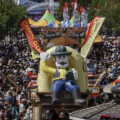
Falice Chin: The ‘wild and weird’ Calgary Stampede
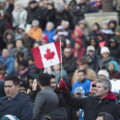
Howard Anglin: Lament for a Lament
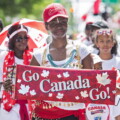
‘A place where anybody, from anywhere, can do anything’: The Hub celebrates Canada Day
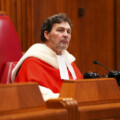
Ian Holloway: The Supreme Court is ditching its iconic red robes. Yes, it matters

